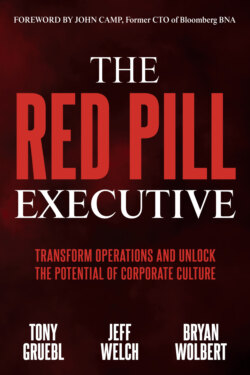Читать книгу The Red Pill Executive - Tony Gruebl - Страница 24
Measuring Strategic Alignment
ОглавлениеTo show how Strategic Alignment can be subjective at times, we thought back to a client we recently worked with on two significant initiatives. These projects were of such high importance that the board of directors of the company asked the president to take the lead as the executive sponsor.
Certainly, with the approval of the board and the president, the initiative was in Strategic Alignment and worth pursuing. Since it supported one of the highest priorities of the business, as stated by the board, it even warranted the cost for outsourced project consultants.
The team conducted its Rapid Control Process (explained in Chapter 6: The Currency of Effectiveness), created a plan, hardened that plan, documented risks, built risk mitigating steps into the plan, created a budget, snaked the documents to the constituents, and kicked off the work. Five weeks into the six-month project, the company dismantled the project, and the manager received new assignments. Those big objectives didn’t happen.
Money went out, but not a single person was in trouble.
When we asked the firm’s president, “Was this initiative a win or loss for the company?” his response was, “We learned a lot…”
“The company spends money to learn what doesn’t work. We call it the school of hard knocks.”
The project as a whole dissolved, but some of the work continued in a modified way as part of regular operations. They all got a little smarter.
The stated strategic objective of the project didn’t happen. The project landed in File 13, and the firm saved money. The only tangible win: learning.
Next time, the company will do things differently, not because the project failed, but because the approach failed. They learned that their approach could not accomplish their strategic mission.
This happens a lot.
The company spends money to learn what doesn’t work. We call it the school of hard knocks.
Sometimes, it’s necessary to spend money, time, effort, and focus to get more fidelity in the true value potential, but even then, we have no idea how the project will fare. This happens all the time in organizations all over the world.
In a story delivered yearly by a college professor, a young, newly minted department head hired an expensive consultant who promised to make the department more efficient, saving the company money. Unfortunately, the consultant failed. The investment was not recovered. The young department manager brought her printed resignation to her divisional vice president, confessing that she had lost the department a lot of money. The VP laughed and threw the document into the trash. “Resign?!?” he boomed. “How dare you offer to resign after we just invested so much to train you to make better decisions? Now get back to work.”
“Too often, the project succeeds, but it fails against the bigger mission of the business.”
How do you measure a project’s performance at this level? It’s a business case. Sometimes it’s an easy case to make – upgrading to a new CRM allowed us to track our customer preferences better, allowing the sales group to achieve their strategic goal of 20% growth and increase market share.
Other times, the business case is less compelling, murkier, or with negative outcomes – we learned a great deal, we won’t make that mistake again, and it cost us less to learn than we otherwise could have spent. We’ll take that as a win.
Failing in Strategic Alignment is the same way. If we opted for an unnecessary and expensive system upgrade as a growth measure when the business strategy was to invest in other, higher margin areas of the business, failure to remain in Strategic Alignment is clear. However, if we made that investment in system upgrades because our strategy was poorly constructed or terribly communicated, fidelity in the true value potential is absent, and people feel confused about whether it was a win or a loss.
Too often, the project succeeds, but it fails against the bigger mission of the business. To keep the project in Strategic Alignment, the Operations Executive and other relevant senior executives should attend project briefings to explore the true value potential and bring fidelity to the discussion.
That takes us into a company meeting, face to face with the most subjective and difficult factor to measure and manage: human behavior.
